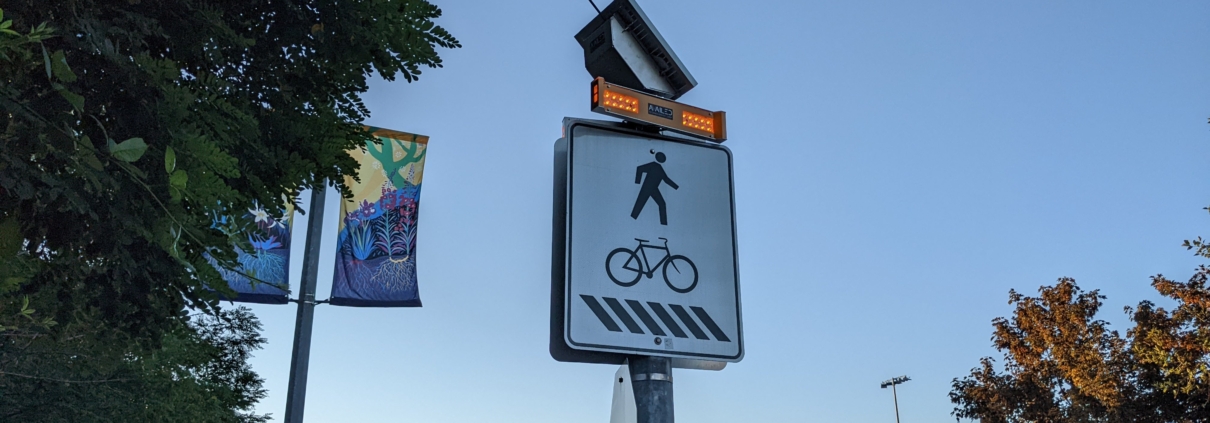Towards a Safer Ride: The Role of RRFB Crosswalks in Bikeway Designs
In recent years, municipalities across the globe have been increasingly focused on enhancing urban mobility, aiming to make cities more accessible, sustainable, and safe for all residents. A significant part of this initiative is the development and expansion of bikeways, which serve as dedicated pathways for cyclists, simultaneously improving pedestrian accessibility. This movement towards a more bike-friendly infrastructure is not just about promoting a healthier lifestyle or reducing carbon emissions; it’s about rethinking urban spaces to prioritize safety and accessibility for non-motorized road users. Among the innovative solutions being adopted, Rectangular Rapid Flashing Beacons (RRFBs) at uncontrolled marked crosswalks stand out for their effectiveness in enhancing safety for both cyclists and pedestrians.
The Rise of Bikeways in Urban Planning
Municipalities are integrating bikeways into their urban planning strategies to create a network of safe and convenient routes for cyclists. These paths are designed to connect residential areas with key destinations such as workplaces, schools, shopping centers, and parks, ensuring that cycling is a viable and attractive mode of transportation. By doing so, cities are not only encouraging residents to opt for cycling over driving but are also taking significant steps towards reducing traffic congestion and pollution.
Bikeways come in various forms, including dedicated bike lanes on streets, shared paths that accommodate both cyclists and pedestrians, and completely segregated cycle tracks. The choice of bikeway type depends on several factors, including the volume of traffic, the speed of vehicles, and the available space. Regardless of the type, the underlying goal remains the same: to provide cyclists with a safe and efficient way to navigate the city.
Enhancing Safety with Rectangular Rapid Flashing Beacons
One of the critical challenges in promoting cycling and walking in urban areas is ensuring the safety of these vulnerable road users, especially at uncontrolled marked crosswalks. These are crossings where pedestrians and cyclists have the legal right to cross but there are no traffic signals to stop vehicles. To address this issue, many municipalities are turning to Rectangular Rapid Flashing Beacons (RRFBs).
RRFBs are user-activated warning devices that alert drivers to the presence of pedestrians or cyclists at crosswalks. When activated, they emit rapid, high-intensity flashing lights, significantly increasing visibility and drawing drivers’ attention to the crosswalk. Studies have shown that RRFBs can dramatically improve driver yield rates, thereby reducing the risk of accidents and enhancing the overall safety of non-motorized road users.
Because RRFBs are activated by pedestrians and cyclists, the high intensity lights flash only in use when needed, reducing unnecessary distractions for drivers and ensuring that the focus is on the crosswalk when it matters most. This makes RRFBs suitable for uncontrolled crosswalks that have a wide range of pedestrian volumes.

Diagram found in Chapter 4L of the MUTCD 11th Edition
Implementation and Impact
The implementation of bikeways and RRFBs requires careful planning and collaboration between municipalities, traffic engineers, and urban planners. It involves a comprehensive approach that includes evaluating existing roadways, identifying key routes for bikeway development, and assessing the most suitable locations for RRFB installations. Public input is also crucial in this process, as it ensures that the needs and concerns of the community are taken into account.
The impact of these initiatives on urban mobility and safety is significant. Cities that have invested in bikeways and RRFBs report higher rates of cycling and walking, reduced traffic congestion, and fewer accidents involving pedestrians and cyclists. Moreover, these measures contribute to a more vibrant and livable urban environment, encouraging residents to explore their cities on foot or by bike.
Conclusion
The growing use of bikeways by municipalities, complemented by the strategic deployment of Rectangular Rapid Flashing Beacons at uncontrolled marked crosswalks, represents a forward-thinking approach to urban design. By prioritizing the safety and accessibility of cyclists and pedestrians, cities are not only addressing immediate transportation challenges but are also laying the groundwork for a more sustainable and inclusive future. As more municipalities embrace these innovations, the vision of cities where walking and cycling are the chosen modes of transportation becomes increasingly attainable, marking a significant step towards transforming urban environments for the better.



